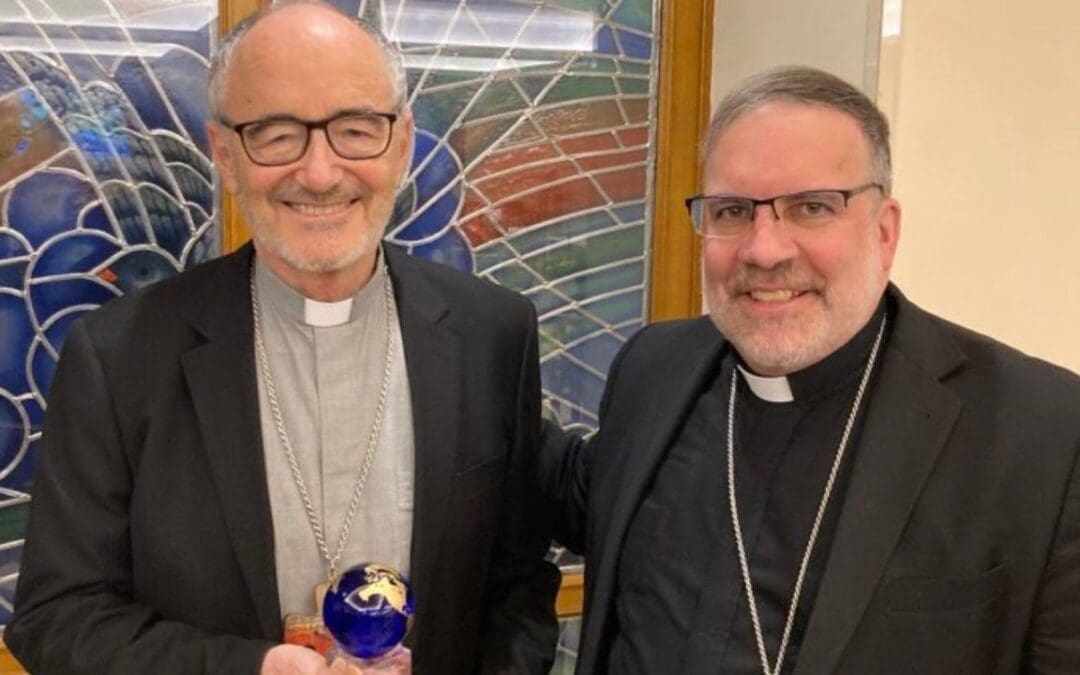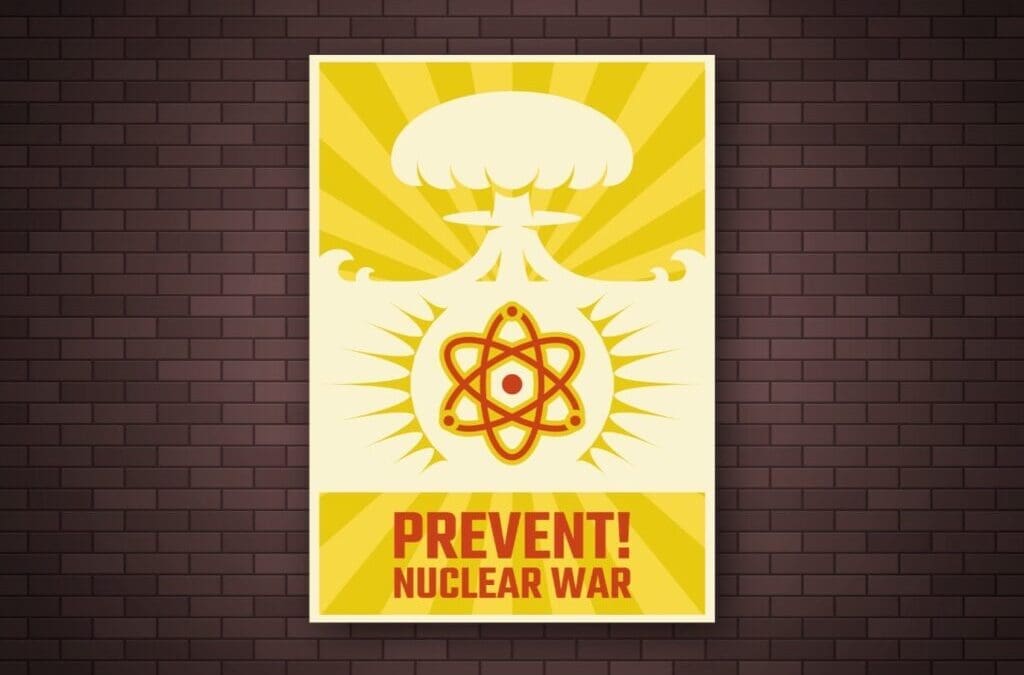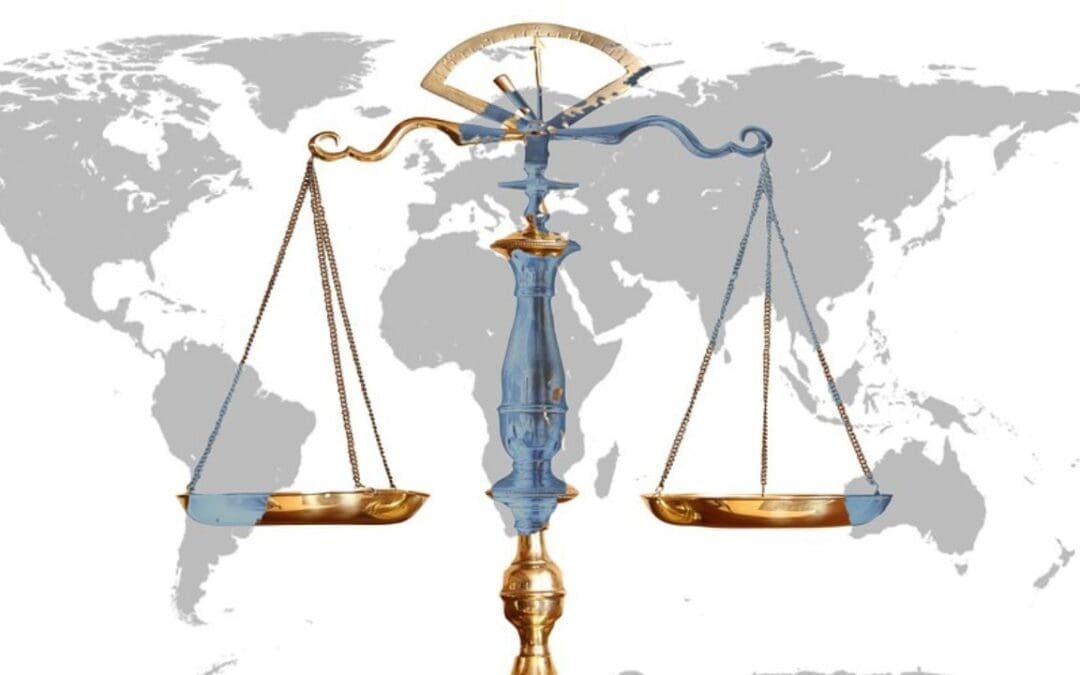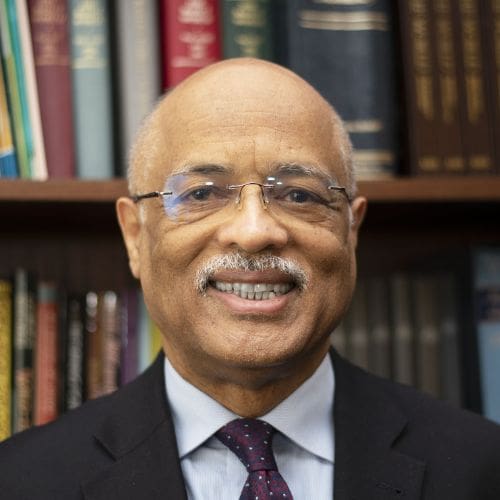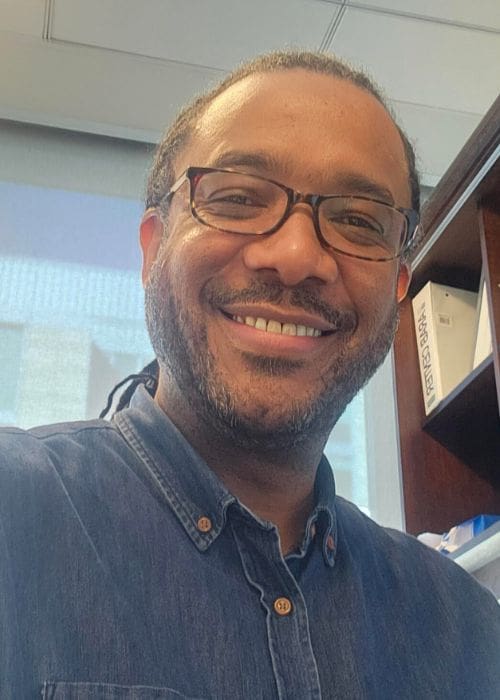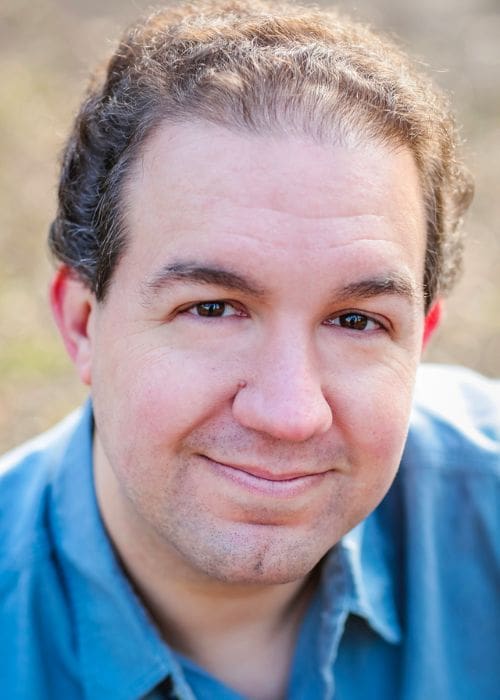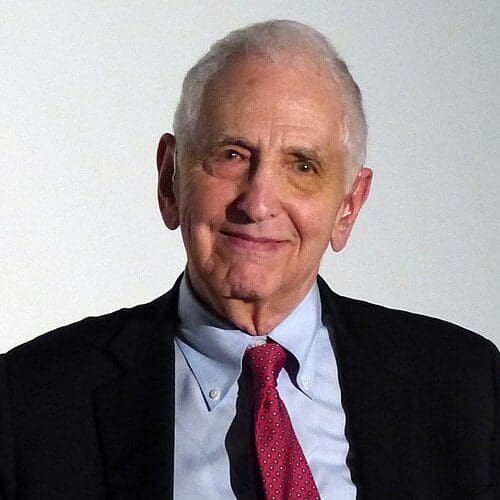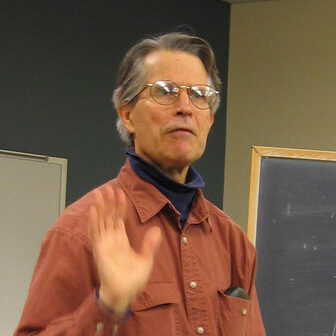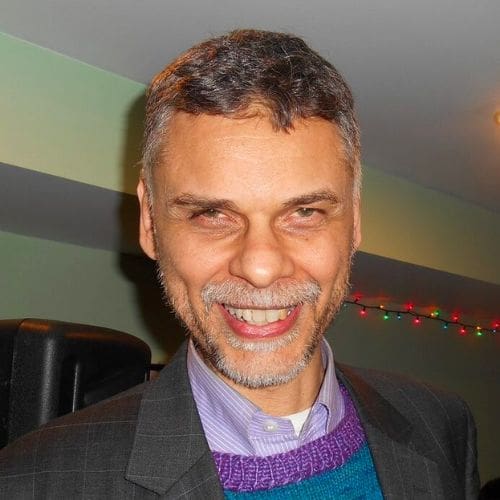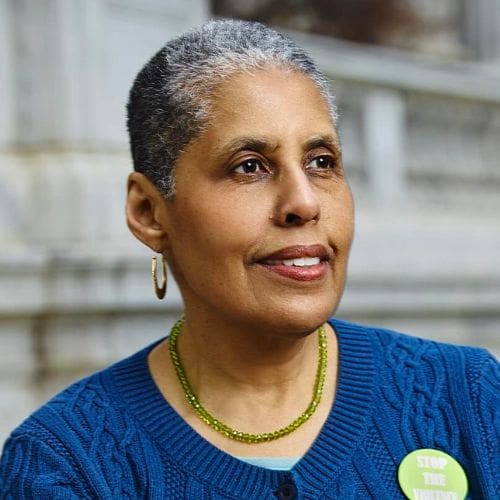
by David Gallup | Dec 19, 2022 | Human Rights
If we want a world where our human and environmental rights are elevated, we must place as much importance on our responsibilities to humanity and the planet as we put on our rights.
The Universal Declaration of Human Rights (UDHR) sets forth the fundamental rights belonging to every individual in the world. The UDHR celebrated its 74th anniversary on December 10, 2022.
This year also marks the 50th anniversary of the Declaration on the Human Environment and the 5th anniversary of the Declaration of Ethical Principles of Climate Change. These declarations call for the preservation, enhancement, and equitable use of the environment for present and future generations.
The UN Conference of Parties that occurs every year, the most recent being COP27 in Egypt last month, develops additional accords to enforce environmental rights, such as the Loss and Damage Fund intended to assist people in places most negatively affected by climate disasters.
Distressingly, humanity has yet to fulfill the duties that arise from these global meetings of national governments and from these rights declarations. Celebrating these declarations and international agreements builds an understanding of human and environmental rights. Rights awareness is the first step. The next step is to implement the goals of the declarations, especially for people living in the most vulnerable situations.
Refugees, the stateless, the indigenous, the economically disadvantaged, and those facing war, discrimination, and oppression suffer the most from deleterious human impacts on the environment. Close to 100 million internally/externally displaced and stateless persons in the world – one out of every 80 persons – have had to flee their homes to seek safe places to live. As environmental destruction worsens, climate refugees will multiply this number exponentially.
Civil society has been present during the development of human and environmental rights declarations, but individual humans do not yet have a vote in world affairs. As national citizens, individuals can vote on local issues, but we have limited or no say in how governments and corporations around the world treat the oceans, the forests, the land, the atmosphere, and other species.
In the nation-state system, governments and their leaders can violate human and environmental rights with impunity, because individual accountability for global violations does not yet exist in human and environmental rights law spheres at the world level.
But there are legal and societal measures that we can implement to realize the promise of human and environmental rights declarations.
Global institutions of world law, such as a universal rights court and a people’s world parliament, are tools that can help realign humanity’s priorities to be in sync with the needs of the Earth.
Attempts to address environmental rights judicially are in process. For example, ecocide – severe, widespread, or long-term damage to the environment – is under consideration as a crime within the jurisdiction of the existing International Criminal Court and a future International Court for the Environment. An environmental rights court would adjudicate ecocide, but not the human rights violations of people living in affected areas. A global judicial system that adjudicates violations of both human and environmental rights, a World Court of Human and Environmental Rights, would provide a holistic solution.
World law institutions are one component to realizing universal rights. The other component is empowering individual action by recognizing our legal status as world citizens. With the right to vote directly in world referenda or through world parliamentarians on issues that affect the entire world, we would increase our individual engagement and our personal responsibility.
Seeing the Earth as one, world citizens understand how our actions affect our fellow humans and the environment. Together, we can develop strategies for sustainable living based not just on human needs, but also on the needs of the Earth.
Human rights and environmental rights are intertwined. Without a safe and sustainable environment, our rights become meaningless. Without just and peaceful interactions among humans, the Earth becomes a victim of human violence, for war is one of the worst destroyers of nature.
As the brain and conscience for the planet, we world citizens have the duty to use our intelligence and empathy to harmonize the needs of humanity with the needs of the Earth.

by Citizens for Global Solutions | Dec 14, 2022 | Human Rights
Citizens for Global Solutions is honored to present Pope Francis with our Global Citizen Award for 2022. This award is presented once a year to an individual who is recognized as a Global Citizen by the general public for their commitment to one or more of the following areas:
- An end to war and violence in the resolution of international disputes
- The elimination of nuclear weapons
- Democratic global governance
- Protection of universal human rights and freedoms
- Care of the global environment
- Embracing loyalty to our world in addition to loyalty to any one nation
Pope Francis has demonstrated to the whole world his commitment to all these areas.
As the leader of the Catholic Church, he is truly catholic/universal in his concern for the entire human family and the planet we all share.
His work to protect the global environment is inspiring. “Laudato Si” was instrumental in helping the people and the leaders of the world recognize the seriousness of the environmental crisis facing our common home.
We are inspired by his teaching in “Fratelli Tutti” about a love capable of transcending borders so that the human family can live together in harmony and peace, without expecting everyone to be or look the same. We also agree with his advice in this document that we need new structures to solve global problems that affect us all. Indeed Pope Francis is a great world citizen and a model for all of us.
Citizens for Global Solutions promotes the ideal of “world peace through world law” and democratic world federation, which is consistent with the Catholic Church’s teachings on a public authority for the world community, subsidiarity, solidarity, and the protection of human rights.
We are grateful to Bishop John Stowe, who is a member of the CGS National Advisory Council, who hand carried this award from the US to the Vatican for Pope Francis. Bishop Stowe presented the award to Cardinal Michael Czerny, SJ, Prefect of the Dicastery for Integral Human Development.
Thank you, Pope Francis, for all you do to make our world a better, safer, healthier, more loving place for all humanity.

by Lawrence Wittner | Dec 10, 2022 | Peace
Although all wars are not imperialist wars, it is remarkable how many imperial conquests have occurred over past centuries.
Mobilizing their military forces, powerful states and, later, nations carved out vast empires at the expense of weaker or less warlike societies. Some of the largest and best-known empires to emerge over the millennia were the Persian, the Chinese, the Mongol, the Ottoman, the Russian, the Spanish, and the British.
The standard policy for these and other empires was to absorb new, conquered lands into their domains, either as parts of the mother country or as colonies. In the eighteenth century, the British, French, Spanish, and Portuguese empires used their military muscle to seize substantial portions of the Western Hemisphere from the native inhabitants. During the nineteenth and early twentieth centuries, imperial conquest accelerated rapidly around the world. By 1913 almost all of Africa had been colonized by European powers, while Imperial Russia, having annexed its neighbors, had become the world’s largest nation. Asia, too, had fallen largely under foreign domination. Meanwhile, the United States, established by a thin string of colonies along the Atlantic coast of North America, expanded across the continent to the Pacific, mostly thanks to successful wars against Mexico and Indian nations. Thereafter it moved on to colonize Hawaii, the Philippines, Cuba, Puerto Rico, and Guam.
Rising Resistance to Imperialist Wars
But imperialist conquests didn’t sit well with the emerging democratic spirit of the early twentieth century. They didn’t sit well with the rising socialist movement that denounced imperialism as a tool of the ruling class. They didn’t sit well with subject nationality groups and nations that were beginning to demand national self-determination and independence.
Consequently, as the horrors of World War I engulfed large portions of the globe and as war-weary soldiers and the public turned increasingly against imperialist war aims, government leaders adapted to the new mood. Having, belatedly, brought the United States into an alliance with Britain and France in their war against the Central Powers, U.S. President Woodrow Wilson issued his Fourteen Points in January 1918. This document promised no secret imperialist treaties, an adjustment of colonial claims, and a League of Nations to guarantee “political independence and territorial integrity to great and small States alike.” The Fourteen Points evoked an enthusiastic response, including from the young Ho Chi Minh, who turned up at the 1919 Versailles peace conference to press for Vietnam’s independence from French colonial rule.
In many ways, the Versailles peace settlement proved a failure. The promised “self-determination” was limited to Europe, and although the League did establish a “mandate” system to prepare colonies elsewhere for independence, it merely shifted their rulers from the Central Powers to the war’s victors. Moreover, the rising fascist nations—Germany, Italy, and Japan—threw off even a pretense of favoring decolonization and launched imperialist wars in Africa, Europe, and Asia.
Important Breakthroughs and Setbacks After World War II
Ultimately, it took World War II to shatter the old colonial system. In its aftermath, the imperial powers gradually abandoned their colonial rule in Africa, the Middle East, and Asia. In some cases (for example, in Indonesia, Algeria, and Vietnam), they were driven out by anti-colonial revolutions. More often, however, internal agitation for independence and external pressure by the United Nations led to the advent of self-government, after 1945, in most of the former 80 colonies.
Even so, as the old-style imperialism crumbled, a newer model—replacing outright colonialism with political control through occasional military intervention—arose during the Cold War. For the most part, this new imperialism was practiced by the Soviet Union in Eastern Europe and Afghanistan and by the United States in Latin America, and Vietnam. With the end of the Cold War, however, even the new imperialism declined.
Therefore, it came as a shock when, this February, the Russian government, having formally recognized Ukraine’s independence in 1994, launched an old-fashioned imperialist war against that nation. Only a few days before the invasion, Vladimir Putin issued a proclamation denying Ukraine’s right to an independent existence and claiming that Ukraine was “Russian land.” Not surprisingly, the UN General Assembly condemned the invasion by a vote of 141 to 5.
Although Putin justified the military assault by claiming that Ukraine’s membership in NATO would provide an existential threat to Russia, that membership was not at all imminent when the invasion occurred. A month later, when President Zelensky offered to have his nation remain neutral in exchange for a Russian withdrawal from Ukraine, Putin ignored the offer. In May, when Finland and Sweden, horrified by the Russian invasion, announced plans to join NATO, Putin failed to halt it. Instead, this October, Russia annexed about a sixth of Ukraine’s territory. Nor has Putin ever renounced gobbling up the rest of Ukraine.
Stopping Imperialist Aggression
Can anything be done to bring an end to imperialist wars?
Yes, several things could be done. One that has been effective on some occasions is to mobilize an anti-imperialist movement in the aggressor nation and elsewhere. Another that has worked is for the colonized to militarily resist the imperialist power―although, of course, the human cost can be enormous. Furthermore, the international community can roundly condemn imperialist wars and refuse to recognize territorial annexations that flow from them.
Ultimately, though, the world needs a strengthened international security system that will reject both the old and the new imperialism. In some ways, the United Nations already provides this framework through the UN Charter, the power to levy economic sanctions, and a structure for the mediation of conflicts. Even so, the world organization is not yet strong enough to wipe out the vestiges of imperialist aggression. No single country―and certainly not the imperial nations of the past―has the credibility and power to tackle this project alone. But the world community might just possess enough wisdom and determination to finish the job it began a century ago.

by Lawrence Wittner | Nov 28, 2022 | Disarmament, Peace
Even international alliances can unravel when nations confront the insanity of a nuclear holocaust.
An illustration of this point occurred recently, after Vladimir Putin once again threatened Ukraine and other nations with nuclear war. “To defend Russia and our people, we doubtlessly will use all weapons resources at our disposal,” the Russian president said. “This is not a bluff.” In response to this statement and to sharp UN condemnation of Russian nuclear threats, Chinese president Xi Jinping issued a public statement early this November, assailing “the use of, or threats to use nuclear weapons.” To “prevent a nuclear crisis” in Europe or Asia, he insisted, the world should “advocate that nuclear weapons cannot be used” and “a nuclear war cannot be waged.”
Aren’t these two nuclear-armed nations currently aligned in their resistance to U.S. foreign policy? Yes, they are, and when it came to Putin’s war upon Ukraine, Xi refrained from suggesting a Russian withdrawal. But nuclear war, as the Chinese leader made clear, was simply not acceptable.
This was not the first time a Russian-Chinese alliance was ruffled by a dispute over the use of nuclear weapons. An even deeper conflict occurred during the late 1950s and early 1960s when, ironically, the roles of the two nations were exactly the reverse.
At that time, the Chinese government, led by Mao Zedong, was embarked on a crash program to develop nuclear weapons. In October 1957, China’s weapons program secured a major gain when the Russian and Chinese governments signed the New Defense Technical Accord, in which the Russians agreed to supplementing the nuclear assistance they had already provided to the Chinese by supplying them with a prototype atomic bomb, missiles, and useful technical data.
But Russian officials soon had reason to doubt the wisdom of assisting China’s nuclear weapons development program. As Soviet premier Nikita Khrushchev recalled, the following month, at a Moscow conclave of Communist party leaders from around the world, Mao gave a speech on nuclear war that startled those in attendance. According to the Soviet leader, the “gist” of Mao’s speech was: “We shouldn’t fear war. We shouldn’t be afraid of atomic bombs and missiles. No matter what kind of war breaks out―conventional or thermonuclear―we’ll win.” When it came to China, Mao reportedly said, “we may lose more than three hundred million people. So what? War is war. The years will pass, and we’ll get to work producing more babies than ever before.”
Khrushchev found Mao’s remarks “deeply disturbing,” and recalled with irritation: “Everybody except Mao was thinking about how to avoid war. Our principal slogan was ‘On with the Struggle for Peace and Peaceful Coexistence.’ Yet here came Mao . . . saying we shouldn’t be afraid of war.’ In early 1958, as Soviet doubts increased about the reliability of China’s leadership in dealing with nuclear weapons, Khrushchev decided to postpone shipment of the prototype atomic bomb to China.
Eventually, the Soviet government not only withdrew its assistance to the Chinese nuclear weapons program in 1960, but took steps that placed the Soviet Union at loggerheads with the Chinese leadership. Key among these steps was working out an agreement on a nuclear test ban treaty with the governments of the United States and Britain—an agreement that, in part, was designed to block the ability of China to become a nuclear power. This Soviet shift toward a nuclear arms control and disarmament treaty with the West was bitterly opposed by China’s rulers, who were determined to develop nuclear weapons and, by 1964, succeeded in doing so. Meanwhile, the Sino-Soviet rift grew ever more heated, with the Chinese pulling out of the Soviet-dominated World Peace Council and ferociously competing with the Russians for leadership of the world Communist movement.
There are some lessons that can be learned from these incidents, in which major powers displayed signs of veering toward nuclear war. The obvious one is that even military allies might balk, at times, when they see an international confrontation slipping toward a nuclear disaster. Another, less evident, is that nations with access to nuclear weapons are not necessarily restrained from threatening or waging nuclear war by the prospect of nuclear retaliation from other nuclear powers. Or, to put it another way, nuclear deterrence is unreliable. Above all, these events and others underscore the fact that, while nuclear weapons exist, the world remains in peril.
Fortunately, abolishing nuclear weapons before they destroy the world is not an utterly utopian prospect. Thanks to popular pressure and disarmament treaties, the number of nuclear weapons around the globe has been reduced since 1986 from about 70,000 to 12,700. Moreover, a UN Treaty on the Prohibition of Nuclear Weapons, crafted and approved by an overwhelming majority of the world’s nations, went into effect in January 2021.
Unfortunately, none of the world’s nine nuclear powers has signed or ratified this nuclear weapons abolition treaty. Until they do so and, therefore, stop producing, stockpiling, and distributing nuclear weapons to other countries, the world will continue to live in a state of nuclear peril, subject only to occasional flashes of sanity by these same nuclear-armed nations.
Surely, people around the world deserve a better future.

by Jacopo DeMarinis | Nov 24, 2022 | World Federation
If humanity is to survive in the face of climate change, nuclear proliferation, and international political conflict, we must muster the courage to act with conviction and unity. On every level, starting at the individual and rising to the nation state, we must adopt the mindset with which world leaders approached the enormous task of ensuring global peace following the horrors of World War II. Yet, unfortunately, we are currently lacking that conviction and that unity.
Multilateral institutions have all too often failed to fulfill their mandate. António Guterres, the UN Secretary-General, publicly acknowledged the failure of the UN Security Council, the organ of the United Nations tasked with ensuring global security and peace, to prevent or end the Ukraine war. The Security Council has been ineffective because it is composed of five permanent members―the United States, China, Russia, France, and Britain―that have veto power that can block any resolution set forth to cope with conflict, as Russia has repeatedly done with respect to the Ukraine war.
Although there is a general consensus that the climate crisis must be addressed internationally, climate accords tend to be legally unenforceable and are easily stymied by disagreement over which countries are most responsible for cutting back on fossil fuel emissions and how to establish a roadmap for emissions reduction. For example, the Paris Accords require countries to set their “national determined contributions,” which can be lax or stringent, and rely mainly on peer pressure to promote compliance. Furthermore, the backing of the largest emissions contributors, the United States and China, is crucial if these agreements are to be effective. International action on climate change was greatly hindered by the U.S. government’s decision against ratifying the Kyoto Protocol, just as the Paris Agreement suffered greatly when the Trump administration decided to pull the United States out of it.
Nor do our current global institutions seem capable of securing nuclear disarmament. Nuclear weapons states (NWS) like Russia, China, and the United States have recently failed to honor their nuclear disarmament commitments, with the Russian government refusing to back the final draft of an updated declaration on the nuclear Non-Proliferation Treaty (NPT). Furthermore, China, the United States, Russia, and the six other NWS have declined to support the Treaty on the Prohibition of Nuclear Weapons, an agreement promoted by non-nuclear weapons states frustrated with the failure of the nuclear powers to adhere to the nuclear disarmament commitments laid out in the NPT.
To effectively address these transnational threats, we need to begin strengthening and transforming the United Nations into a democratically-elected world federation. This is a colossal yet imperative task currently promoted by the World Federalist Movement and its U.S. member organization, Citizens for Global Solutions.
Why is a world federation necessary?
As the philosopher Emery Reves argued, the Industrial Revolution ushered in an economically and physically interdependent world while leaving political decision-making power in the hands of individual states. This is a lawless system that gave rise to the world wars. The only way to prevent conflict is to transfer some political authority to a higher source: a world government. Norman Cousins, former editor-in-chief of the Saturday Review, put the need for world federalism in the context of the atomic age, arguing that the advent of the nuclear bomb made national sovereignty “obsolete.” In an unregulated international environment, any country could easily acquire nuclear weapons, thereby threatening the national sovereignty of others, as well as all humankind. Thus, the concession of absolute national sovereignty is essential to secure the stability and survival of all nations in the future.
How can a world government be created?
One key proposal is to strengthen the United Nations by transforming the General Assembly into a world legislature that can pass binding resolutions. Richard Hudson, a world federalist, argued that such a legislature could employ a procedure for decision-making in which binding resolutions would be approved with a two-thirds majority vote of the current member states, countries that represent two-thirds of the total population of the member states, and nations that contribute two-thirds of funds to the world government’s budget. World federalists also advocate reforming the UN Security Council by revoking the veto and increasing the number of permanent members on the Council, key reforms supported by figures like Brazil’s newly-elected president, Lula da Silva. Other key suggestions include creating an “International Disarmament Organization” and strengthening the International Criminal Court.
The newly created world government could be equipped to effectively address climate change, interstate conflict, and nuclear proliferation. Each country’s national military could be reduced to what is required for internal policing, diverting military budgets into domestic infrastructure that would enhance its citizens’ quality of life. An “international peacekeeping force” could be created to enforce world law and prevent interstate conflict as part of an international executive branch. Furthermore, the democratically-elected world legislature could require the complete disarmament of weapons of mass destruction, including nuclear weapons. As for climate change, the world government could issue binding resolutions guiding the Earth toward a more sustainable future through green technology and climate change mitigation. Furthermore, some world federalists and environmental activists advocate the creation of an International Court for the Environment, which could provide an enforcement mechanism for climate treaties.
Is a world republic is unattainable?
What country would agree to limit its absolute sovereignty? And yes, a country whose political leaders are held captive by special interests like military contractors and the fossil fuel industry might not agree to such an arrangement. Yet if the people unite with conviction to claim their right to live in a peaceful world, free from nuclear weapons, and to enjoy an economically and environmentally sustainable future―birthrights a world federal government is uniquely positioned to protect―this seemingly unattainable dream could become our reality.

by Nicola Vallinoto | Nov 7, 2022 | Climate Justice
On the last weekend of October 2022, Brazil elected a new president: Luiz Inácio Lula da Silva, who defeated Jair Bolsonaro in a closely-fought second-round vote. Lula secured 50.8 percent of the vote compared to Bolsonaro, who garnered 49.2 percent.
On the last weekend of October 2022, Brazil elected a new president: Luiz Inácio Lula da Silva, who defeated Jair Bolsonaro in a closely-fought second-round vote. Lula secured 50.8 percent of the vote compared to Bolsonaro, who garnered 49.2 percent .
The return to office for Lula, who led the country from 2003 to 2010, would mark an extraordinary political change from a nationalist government to a government better inclined towards international democracy.
“Today the only winner is the Brazilian people,” Lula da Silva told the crowds gathered at a Sao Paulo hotel. “This isn’t a victory of mine or the Workers’ Party, nor the parties that supported me in campaign. It’s the victory of a democratic movement that formed above political parties, personal interests and ideologies so that democracy came out victorious.”
We can say that in addition to the Brazilian people, the world has also gained victory from da Silva’s victory because the proposals of the new president concern us all. Indeed, point of views of Lula and Bolsonaro deeply differ on various issues. The two politicians diverging views on these issues are subsequently outlined.
On the Amazon and climate change
Speaking during the annual debate in the UN General Assembly on Sept. 24 2019, Mr. Bolsonaro, who negates climate change, stressed that “the Amazon is not now destroyed by the flames, as the media would like to believe.” Bolsonaro underlined that “It is a fallacy to say that the Amazon is the heritage of humankind, and a misconception, as confirmed by scientists, to say that our Amazonian forests are the lungs of world. Using these fallacies, certain countries instead of helping, embarked on the media lies and behaved in a disrespectful manner and with a colonialist spirit. They even called into question that which we hold as the most sacred value: our own sovereignty.”(1) He also thanked Donald Trump who shares his approach to national sovereignty.
But reality says than since Bolsonaro took office since January 2019, deforestation has almost doubled compared to the previous year. During 2020 and 2021, Brazil’s greenhouse gas emissions increased by 9.5%. Of all emissions, 46% were due to deforestation, mainly driven by illegal mining and livestock expansion.
Preliminary reports indicate that in 2022, deforestation will reach record levels in the Amazon region. Izabella Teixeira, Brazil’s former environment minister from 2010 to 2016, promised to update the country’s nationally determined contribution (NDC) to the Paris Agreement, which outlines its plans to cut emissions. Brazil proposed its first NDC in September 2015 and has since updated it twice, the first time being in 2020 and the second in 2022. In both updates, made under Bolsonaro’s term as president, the country used accounting tricks to weaken its climate goals.
Conversely, according to Teixeira, Lula’s priority is to curb deforestation, the country’s main source of emissions, which has surged to a decade high under Bolsonaro (2).
In an article published by Le Monde (3) Lula da Silva affirmed that “today, the climate emergency, rising inequality and geopolitical tensions reveal the seriousness of the crisis affecting our planet. Unfortunately, Jair Bolsonaro has continued to make this situation worse by practicing climate revisionism, undermining the institutions of our democracy and promoting intolerance. Brazil, under my presidency, will again benefit from public policies aimed at improving the lives of our people and inspiring strong initiatives in favor of the protection of the environment, in particular the Amazon, and the fight against poverty in the world.”
On a Multipolar world
Lula da Silva explained his view on international affairs in the Tribune of Le Monde asserting that: “my goal now is to do more and better. For this, it is necessary for Brazil to be present at major international debates. We will develop a sovereign and active foreign policy. We will work for peace, dialogue and international cooperation. We believe in a multipolar world, and unlike some members of the Bolsonaro government, we do not believe that the Earth is flat and that the climate change does not exist. My Government will work with other countries to rebuild the Amazon Fund and thus take care of the Amazon rainforest and biodiversity.
In Latin America, we will strengthen Mercosur [Argentina, Brazil, Paraguay, Uruguay] and relaunch regional integration. We no longer want Latin America to limit itself to the sole export of raw materials. In this sense, we will work so that our countries can once again industrialize and technologically progress.
Faced with the growing rivalries between China and the United States, we want to dialogue with everyone, and build a strategic partnership with the European Union (EU). Improving the terms of the agreement Mercosur-EU will allow us to increase our trade, deepen our bonds of trust and strengthen the defense of our common values.
On the other hand, the priority of my government will be to restore the relationship with the African continent. Brasil will be present to help and expand political, economic and social cooperation with its countries. We believe – and, in winning, we will work – for a multipolar world united around values such as solidarity, cooperation, humanism and social justice. Faced with the challenges of civilizations that we live, we believe in a new global governance that must begin with the expansion of the UN Security Council and the establishment of new forms of cooperation between countries. We believe that another Brazil is possible, and that another world is possible because, in a past not so far away, we had started building it.”
In 2020, Lula published(4) a call “For a Multipolar World.” The call’s goal is “the creation of a multipolar world, free from unilateral hegemony and from sterile bipolar confrontation,” that “would permit a true re-founding of the multilateral order, based on principles of real multilateralism, in which international cooperation can truly flourish.” The call continues affirming that: “There seems to be an almost universal consensus that the world system will have to be rebuilt in a very fundamental way. It is not impossible, indeed it is imperative, that a certain number of states or supranational entities — such as a reborn European Union and the institutions dedicated to the integration of developing countries in Latin America, Africa and Asia (which will have to be reinforced or recreated) — shall look for alliances and partnerships, in a way that contributes to the creation of a multipolar world, free from unilateral hegemony and from sterile bipolar confrontation.”
On Latin American integration and Sur
In a speech at a rally on May 2nd 2022 Lula said, “We are going to create a currency in Latin America, because we can’t keep depending on the dollar”. He revealed that the currency would be called the Sur, which means “South” in Spanish. Lula explained that countries in Latin America could still keep their sovereign domestic currency, but they could use the Sur to do bilateral trade with each other, instead of having to exchange for US dollars. The Sur could also help to contain inflation in the region, Lula argued. He said the goal of the currency would be to deepen Latin American integration and strengthen the region’s economic sovereignty, weakening its dependence on the United States. Under Brazil’s current government, led by far-right leader Jair Bolsonaro, the South American giant has subordinated itself to Washington(5).
On the UN Security Council
Concerning global governance, Lula da Silva defends a new world governance, which would include the enlargement of the UN Security Council, and the creation of new institutions that “act differently from the IMF.” At a press conference with foreign media in Sao Paulo on August 22nd, Lula said that more countries need to become permanent members of the U.N. Security Council, so that the United Nations can better deal with Russia’s invasion of Ukraine, and growing tensions between China and Taiwan. Noting that the geopolitical landscape is changing, Lula said that the Security Council needs more and more nations and that the right to veto, held by its current five permanent members must be abolished. He asked why Brazil and countries such as Mexico, Egypt, Germany, South Africa and Japan cannot become permanent members, calling for Security Council reform based on geopolitics of the 21st century (6).
Contrary to what Lula said about the UN reform, the enlargement of the Security Council should follow a different and more representative composition. The federalists think that a regional representation (European Union, African Union, Mercosur, etc.) is more inclusive than a national one as proposed by new Brazilian President. Instead the proposal to abolish the anachronistic veto right of the five permanent members of Security Council is fully shareable. Even still, da Silva’s proposals point us in the right direction towards much needed reform in the international global governance system, and the hope here is that this will build some momentum and discourse around this issue.
The Lula da Silva’s victory in Brazil’s recent presidential election could represent a new start for international democracy. Let’s continue to watch the new government’s first steps on foreign policy, and see whether Lula’s electoral commitments will become reality.
https://news.un.org/en/story/2019/09/1047192
https://www.climatechangenews.com/2022/10/07/lula-campaign-update-brazil-climate-plan-ndc-new/
https://www.lemonde.fr/en/opinion/article/2022/10/29/luiz-inacio-lula-da-silva-another-brazil-is-possible_6002211_23.html
https://progressive.international/blueprint/8c4c685c-7ac6-4bbb-8b0b-5fc91fcc68f0-lula-da-silva-celso-amorim-for-a-multipolar-world/en
https://multipolarista.com/2022/05/04/brazil-lula-latin-america-currency-us-dollar/
https://www.nippon.com/en/news/yjj2022082300559/
This article originally appeared here: https://www.wfm-igp.org/federalist-paper/lulas-victory-in-brazils-presidential-election-a-potential-new-start-for-international-democracy-and-climate-change/


